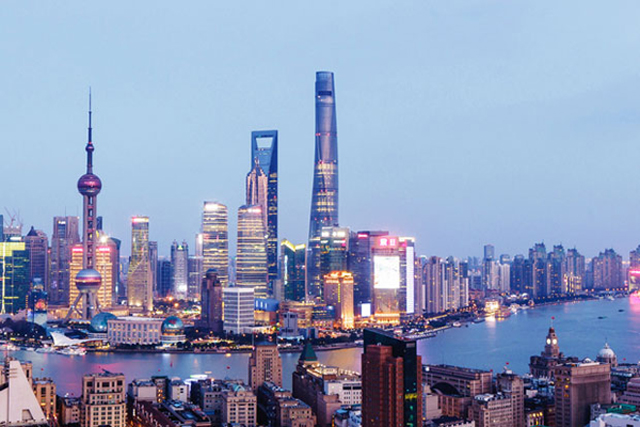
Built in the Lujiazui Financial Center in Shanghai (an area home to acres of farm land roughly 20 years ago), Gensler’s approach to constructing the tower took immense planning and preparation. For starters, the former farmland features an abundance of clay-based soil which, in its original state, has no business supporting the likes of a tower over 2,000 feet tall. To combat this, the firm manufactured an astounding 1,079 steel and concrete piles which were placed into the ground to serve as the tower’s foundation. Once installed, a literal army of concrete-laying trucks spent roughly 63 straight hours pouring the concrete base required for construction.

Officially the third building in the world to achieve the status of “megatall” — i.e. anything above 1,968 feet tall — the Shanghai Tower is currently the tallest building in China. As mentioned above, it’s also the second-tallest tower in the world, but this designation will likely only last around 4 years, as the 3,281-foot Jeddah Tower in Saudi Arabia is on track to be completed by 2020.
Construction of Shanghai Tower is also historically notable as it officially pushed Chicago’s Willis Tower out of the top ten tallest buildings in the world, of which it was a member since construction finished on the building in 1974 — it was even the tallest building in the world at this point. Moreover, official completion of the Shanghai Tower was commemorated by the Council on Tall Buildings and Urban Habitat who included it on its CTBUH Current Tallest 20 which recognizes (you guessed it) the tallest 20 buildings in the world.
All told, the tower boasts an astounding 128 floors which feature a little over 4.5 million square feet of floor space, of which nearly all will be taken up by high-end offices, retail shops, and hotel rooms. At the very top of the skyscraper, Gensler included what it calls an observation point/cultural area for visitors to marvel at the city’s surroundings and learn more about the tower itself. Additionally, Shanghai Tower’s 106 different elevators reportedly run at speeds of 40 miles per hour and the entire building is LEED Gold certified.

On the outside, Gensler outfit the building with a double-layered glass exterior which allows outside light to filter in while also greatly increasing the entire structure’s insulation. The firm also included a staggering 270 different wind turbines on the face of Shanghai Tower which create enough power to completely operate the building’s exterior lighting. Aside from its innovative design, the twisting aesthetic actually benefits the building, funneling rainwater into specific reservoirs which will then use the amassed water to power the heat and air-conditioning used throughout the building.
Completion of Shanghai Tower is a historic achievement which appears likely to set an architectural precedent for skyscraper construction moving forward. As its unique twisting feature provides a number of worthwhile benefits, it wouldn’t be the least bit surprising to see more buildings constructed in this fashion.


